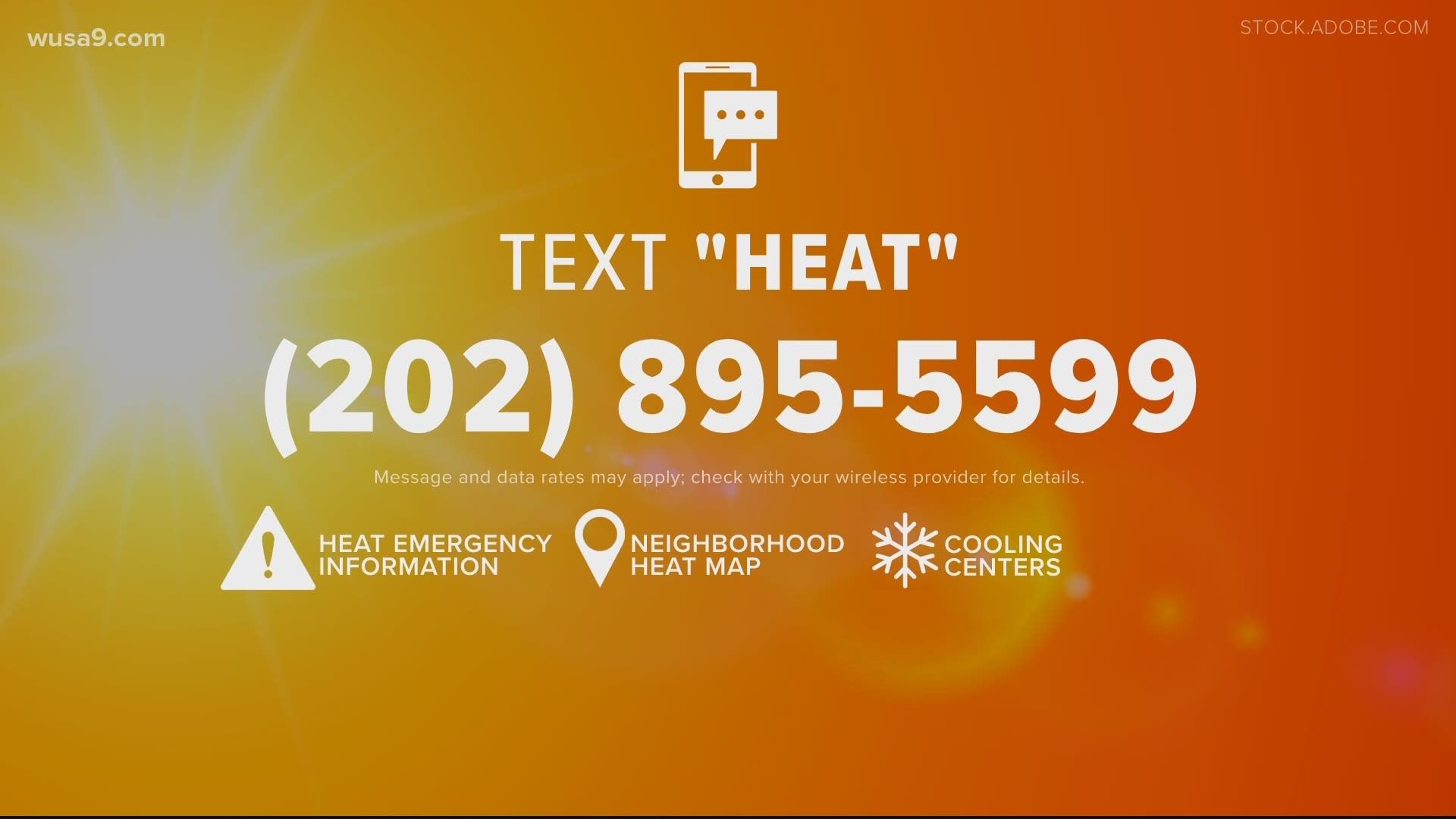ANNANDALE, Va. — Paved surfaces in the heart of an urban heat island in Annandale, Virginia peaked at more than 140 degrees Tuesday afternoon, according to measurements taken by WUSA9 and Annandale residents. By contrast, the surface temperatures of leafy plants in greenspace areas were less than 85 degrees.
The remarkable spread was 56 degrees, illustrating how man-made impervious surfaces like parking lots and concrete structures create a “heat island” effect that magnifies the impact of extreme heat on residents who do not have air conditioning or green areas nearby.
Annandale is among Fairfax County Virginia’s hottest heat islands, according to an interactive map produced by the Northern Virginia Regional Commission (NVRC)
In urban areas, much of the land is covered with development, according to NVRC. Since buildings and roads absorb more heat than trees and greenery, urban areas tend to have higher surface temperatures than surrounding areas, creating what are referred to as heat islands. The term can refer to temperature differences between cities and their surrounding areas as well as temperature differences in different areas in a city or region.
Heat islands continue to radiate excess heat for 4 to 6 hours after sunset, according to government scientists, while areas of impervious surface continue to expand at an increasing rate according to satellite data provided by NASA.
Scientists have determined that the rate of expansion has more than doubled since the 1980s, with nearly 3,000 acres per year being converted to heat-trapping impervious surfaces annually, according to a NASA report.

